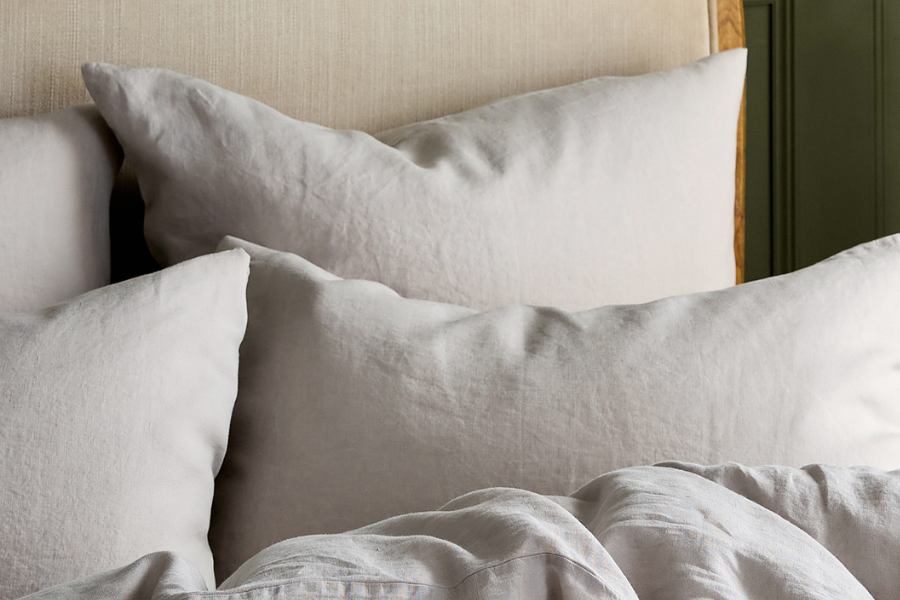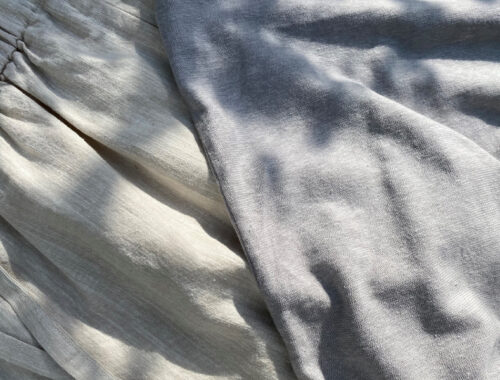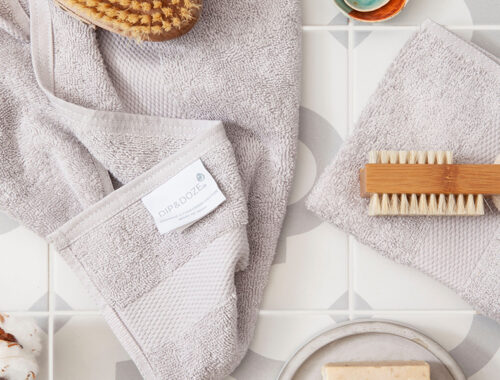
how to wash linen bedding: a complete guide
While high-quality linen and cotton bedding are both equally beautiful options when it comes to long-lasting, slow-living staples that turn your house into a home – each fabric is made from very different plant fibres. Where cotton uses cotton plant fibres (long-staple), linen uses flax plant fibres. And while we’ve already covered the best methods to care for our cotton bedding, today we’re unpacking just what treatment our linen prefers.
A beautiful, expertly sourced, and naturally produced fabric, our linen deserves to be cared for and loved – but doesn’t require heaps of time and space in your laundry room for you to reap its benefits. When cared for, it will get softer with every wash and keep you sleeping as sumptuously as can be.
washing
First and foremost, ensure you don’t fill your machine over three quarters full to allow your linen bedding to properly soak and your detergent and softener to be effectively rinsed out.
Another top tip? Button up your bedding and avoid mixing with snag-prone items in the washer (such as zips and bras) to prevent your sheets from getting tangled and damaged. Also, as we mentioned in our cotton bedding care guide, avoid selecting a quick wash cycle on your machine as it won’t give your detergent enough time to work well. For the safest option, wash your natural linen bedding with warm water (30 °C) to maintain the quality of the beautiful loose weave.
And, although we know most of you love the laid-back, relaxed look of linen, a lighter cinched appearance can be achieved by using a lower spin or a permanent-press cycle. This is, whilst avoiding fabric softener which can interrupt the natural softening that occurs over time with our natural linen bedding.
detergents we recommend using
As conventional detergents are often full of unknowns, such as harmful fragrances (using peroxide or chlorine that take the cleanliness away from doing laundry), it’s important to choose a planet-conscious detergent. Gentler, non-bio detergent options aren’t only kinder to your bedding, but also do wonders for your skin.
Many of us are guilty of using too much in our washes when we want to give our bedding a really good old clean. However, using too much simply makes it much harder to remove during the rinse cycle. It isn’t an exact science. For example, you’ll need a little more detergent if you live in a hard water area than a soft water area. You may also need a little more for a particularly dirty load. But as a general rule, we recommend to follow the manufacturers guidelines, then, once you’re used to a particular brand, you can adjust according to your situation.
drying
If line drying, your linen will have a crisper feel, so we recommend steaming it to help re-soften the fibres. If tumble drying your linen bedding, do so on a low heat setting. Be careful not to over-dry as excessive heat can damage the threads, causing your linen to become less soft.
treating stains
Act fast! You may have just climbed back into bed with your hot tea on a Sunday morning and the last thing you want to do is put a wash on, but this is our top tip for rescuing your sheets. As long as you attend to any mishaps instantly, you can rescue your sheets quickly and easily.
Firstly, dampen the area before you begin trying to remove the stain. After testing your stain remover on an inside seam or hem of the same bedding set to ensure it doesn’t cause discolouration (if you haven’t previously done already), apply your stain remover directly to the mark.
Alternatively, if you don’t have any stain remover to hand, you can spot-clean by carefully adding a little laundry detergent or washing up liquid to the stain. You can also remove most stains by applying a tiny amount of your regular laundry detergent directly to the stained area – working it in with your fingers or a soft bristled brush as you would a stain remover product. If you use this method, allow the detergent to work for at least 15 minutes on your natural linen bedding before machine washing it as usual.
post-drying
When it comes to post-drying maintenance, our natural linen takes the win for most-easy-to-care-for bedding. There’s no need to iron your linen sheets—simply fall in love with its inherent wrinkles that give it it’s ever so charming, antique linen feel. And for those of you really serious about prolonging the life of your linen, have two sets on rotation to keep one set from working overtime.
You May Also Like

how to store your bedding: a guide
June 20, 2023
the beauty of hemp, & how to care for your loungewear
September 3, 2021


